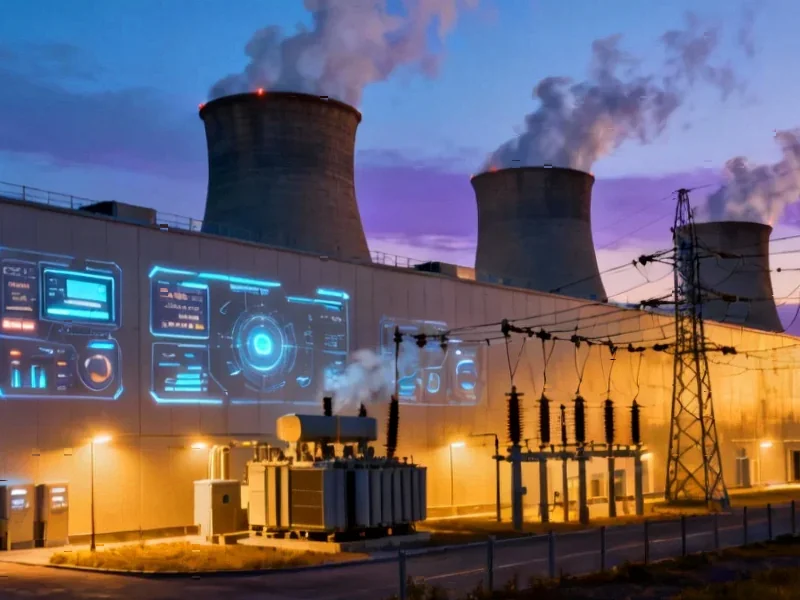According to DCD, Microsoft has signed a $9.7 billion, five-year agreement with Iren to access the company’s Nvidia GB300 GPUs, with Microsoft providing 20 percent in prepayment. The GPUs will be deployed at Iren’s data center campus in Childress, Texas, in phases through 2026 as liquid-cooled data centers are delivered, with the campus having a total capacity of 750MW and the liquid-cooled facilities comprising 200MW. Iren, formerly known as Iris Energy, is transitioning from cryptocurrency mining to AI cloud services and currently operates approximately 23,000 GPUs across North America. The deal represents part of Microsoft’s broader strategy of securing compute capacity through partnerships, following recent agreements with providers like CoreWeave and Lambda estimated to total around $33 billion. This massive infrastructure investment highlights the strategic shifts occurring across the cloud computing landscape.
The Power Constraint Reshaping Cloud Economics
What makes this deal particularly significant isn’t just the dollar amount—it’s the underlying resource Microsoft is actually buying: reliable power capacity. Iren’s strategic advantage lies in its secured 3GW power portfolio across North America, which has become more valuable than real estate in today’s AI-driven market. Traditional cloud providers are discovering that building new data centers isn’t merely about finding land or purchasing hardware; it’s about securing access to electricity grids that can support the massive power demands of modern AI workloads. The 750MW capacity at the Childress campus represents enough electricity to power approximately 600,000 homes, highlighting the sheer scale of infrastructure required for frontier AI models. This power-first approach represents a fundamental shift from the network-first strategy that dominated cloud computing’s first two decades.
The Emergence of Specialized Infrastructure Providers
Iren’s transformation from cryptocurrency miner to AI infrastructure partner illustrates a broader trend: the rise of specialized providers who understand power-intensive computing. These companies bring expertise in managing high-density computing environments that traditional cloud providers initially overlooked. The liquid-cooling technology mentioned in the deployment plans isn’t incidental—it’s essential for managing the thermal output of dense GPU clusters that air cooling cannot effectively handle. This specialized knowledge gives companies like Iren negotiating power with hyperscalers who need immediate capacity scaling. We’re witnessing the fragmentation of cloud infrastructure into specialized tiers, where general-purpose cloud providers must partner with GPU-specific operators to meet customer demands. This creates a new ecosystem where infrastructure expertise becomes as valuable as the hardware itself.
What This Means for Enterprise AI Adoption
For enterprises planning AI initiatives, this deal signals both opportunity and concern. The positive news is that Microsoft’s massive capacity investments suggest continued availability of cutting-edge AI infrastructure for customers. However, the economics of these partnerships will inevitably trickle down to pricing models. Enterprises should expect more tiered pricing for GPU access, with premium costs for the latest hardware like Nvidia’s GB300 series. More importantly, this shift toward specialized infrastructure providers creates new dependency chains—if Microsoft relies on Iren for capacity, and Iren experiences delays in GPU deliveries or power infrastructure, enterprise AI projects could face unexpected bottlenecks. Companies building long-term AI strategies should consider diversifying across multiple cloud providers or exploring hybrid approaches to mitigate these emerging supply chain risks.
The Reshuffling of Cloud Competitive Dynamics
Microsoft’s aggressive leasing strategy—$11.1 billion in data center leases in Q1 FY2026 alone—reveals how the cloud competitive landscape is evolving. Rather than owning all infrastructure, hyperscalers are becoming orchestrators of distributed capacity, similar to how airlines manage aircraft fleets through mixed ownership and leasing arrangements. This approach provides flexibility but introduces new operational complexities. The prepayment structure in the Iren deal (20% upfront) suggests Microsoft is willing to make significant commitments to lock in scarce resources, essentially paying a premium for capacity assurance. This could create a two-tier market where well-funded hyperscalers secure the best resources while smaller providers struggle to compete for both hardware and power access. The result may be accelerated consolidation in the cloud infrastructure market as scale becomes increasingly critical.
The Sustainability Question Looms Large
While not explicitly mentioned in the deal announcement, the environmental implications of this scale of AI infrastructure cannot be ignored. A single 750MW campus represents a substantial addition to regional power demands, and the industry’s rapid growth raises questions about sustainable scaling. The transition to liquid-cooled data centers improves efficiency, but the fundamental energy consumption of AI workloads continues to grow exponentially. As these large-scale deployments proceed, we can expect increased scrutiny from regulators, investors, and the public regarding the carbon footprint of AI infrastructure. Companies that can demonstrate efficient power usage and renewable energy sourcing may gain competitive advantages, while those perceived as energy-intensive could face regulatory hurdles and reputational challenges.




